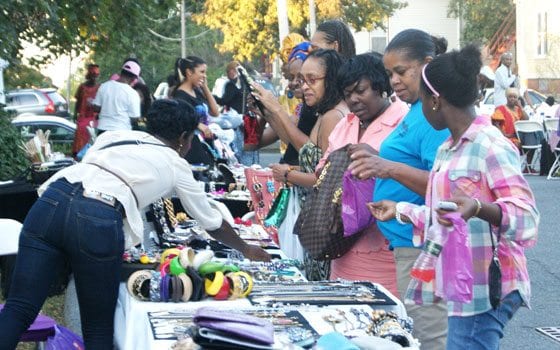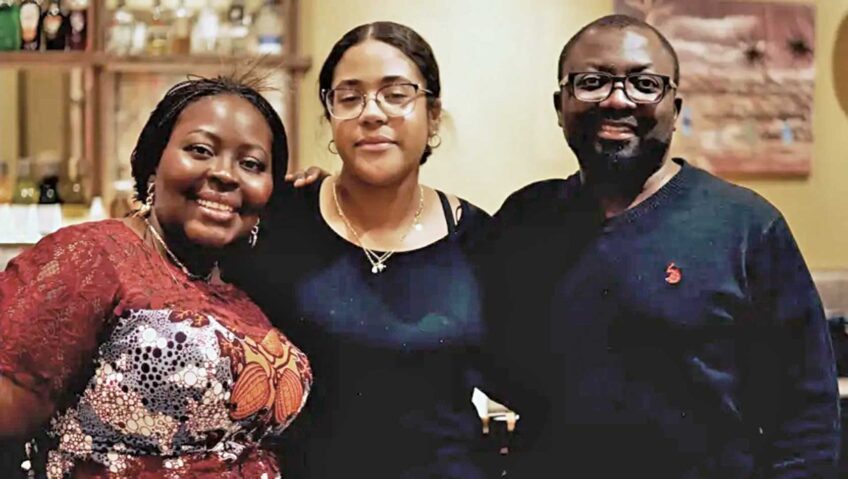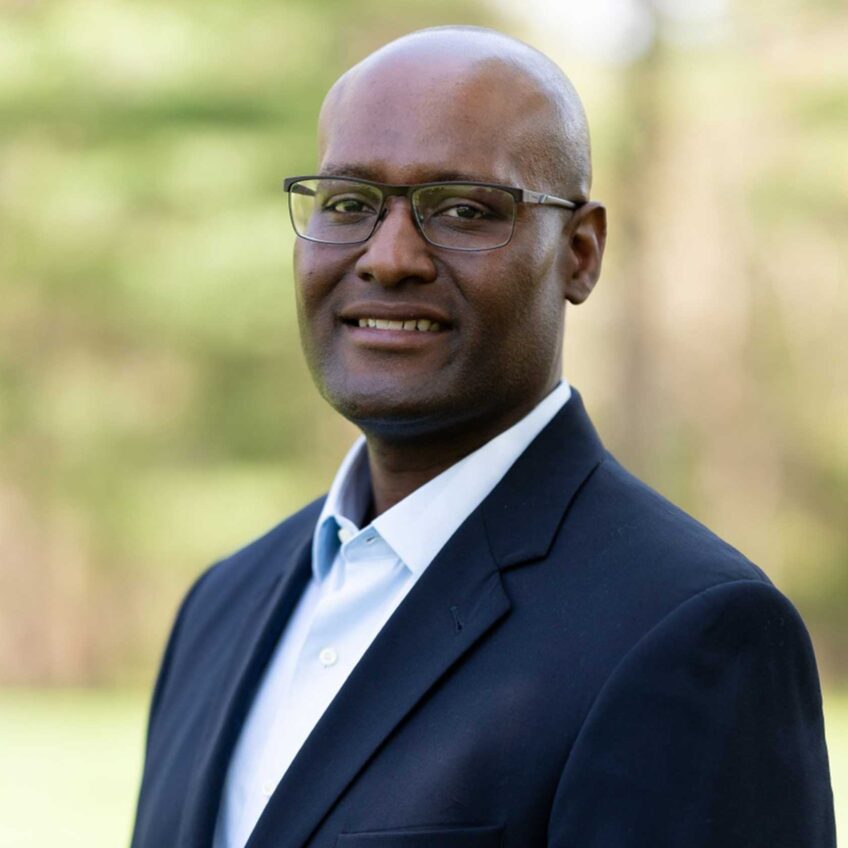

Author: Lena ThomasAttendees browse through the jewelry and accessories at the Cindy’s Pieces booth at the Wrapping for a Cause fundraiser. Proceeds benefited the American Cancer Society.
It was the type of sunny Sunday afternoon that seemed perfect for food, friends, fashion and fun. And knowing the intimate garden party gathering was for a good cause seemed to make those who came to The House of Tafari Collection’s Wrapping for a Cause fundraiser even more enthusiastic.
Held among the greenery and flowers of the Edward L. Cooper Sr. Community Gardening and Education Center in Roxbury’s Fort Hill section, Wrapping for a Cause featured a keynote address from Dr. Abbas Qutab, live music and poetry, a head wrapping demonstration and a fashion show highlighting ornately crafted head wraps and sophisticated clothing designs.
With the garden sidewalks as their catwalk, models of all shades and sizes, clad in printed caftans and capes, fitted pants and skirt suits and sultry dresses and gowns, strutted past the audience, showing off clothing creations by eight local designers who dedicated their time and fashions to the fundraiser.
And though the clothing was intriguing, the vibrantly colored and patterned head wraps were clearly the stars of the show. They blossomed around the models’ heads like crowns, the sheer variety of twists, knots, tucks, textures and heights demonstrating the amazing versatility of a single swath of fabric.
The head wrap fashions also put on display the creativity of their designer, Imani McFarlane. In addition to creating clothing and head wraps that blend “the sparkling colors and patterns of Africa and the Caribbean with the elegant allure of European haute couture,” the seamstress, artist and philanthropist offers a variety of head wrapping and art-focused interactive workshops.
House of Tafari Collection also gives McFarlane an opportunity to give back to her community.
“When I sat down in meditation and thought about what I would like to bring to my community, it was health and wellness — a wholesome life,” she said.
With one in two women being diagnosed with cancer each year, it was clear to McFarlane that she should use her artistry and compassion to empower those coping with cancer. For the last five years, House of Tafari Collection has been providing head wrapping workshops for cancer patients and survivors through the American Cancer Society’s Look Good … Feel Better program, which encourages women with cancer by providing them with chemical-free cosmetics and information about head coverings.
“Many women who undergo cancer treatment lose their hair and chose not to wear wigs,” says Angela Hall-Jones, community executive for Health Initiatives with the American Cancer Society. “A lot of times, wigs irritate your scalp because of the chemicals that the wigs were treated with,” McFarlane pointed out.
Her “Art of African Head Wrapping” workshops show cancer patients of all backgrounds and cultures that head wraps can be “a natural and beautiful alternative” to wigs and a “quick and simple way for cancer patients to regain their self-esteem.” Wrapping for a Cause arose from what McFarlane called her “vision for beauty and passion for health and wholeness for those affected by cancer.” Proceeds from the event benefit the American Cancer Society.
Boston Public Health Commission Pink and Black ambassador Debra Grooms told of her personal journey of discovering and being treated for breast cancer.
“I was diagnosed with breast cancer in 2005. I was working in a housing development bringing resources and information to the women [who lived there], and a program called Reach 2010 came out and did a presentation on breast cancer. I sat in on the presentation and listened to the information that was given to us. And later that evening when I went home, I did a breast self-exam and found a lump in my breast. I was shocked,” Grooms recalled.
“Every day when I came home from work, I went right to that same place where that lump was in my breast. It took me two months to go to the hospital to see what was in my breast. I guess I was somewhat in denial, thinking every day it would go away,” she continued.
After a lumpectomy, a mastectomy and finally breast reconstruction surgery (“I have the breasts of a 20-year-old, y’all,” she laughed), Grooms is working with Pink and Black to urge Boston’s Black women to take charge of their health by paying attention to their bodies.
“You have to be your own advocate, and if you can’t advocate for yourself, you have to take somebody to the hospital with you to be an advocate for you,” she said.






